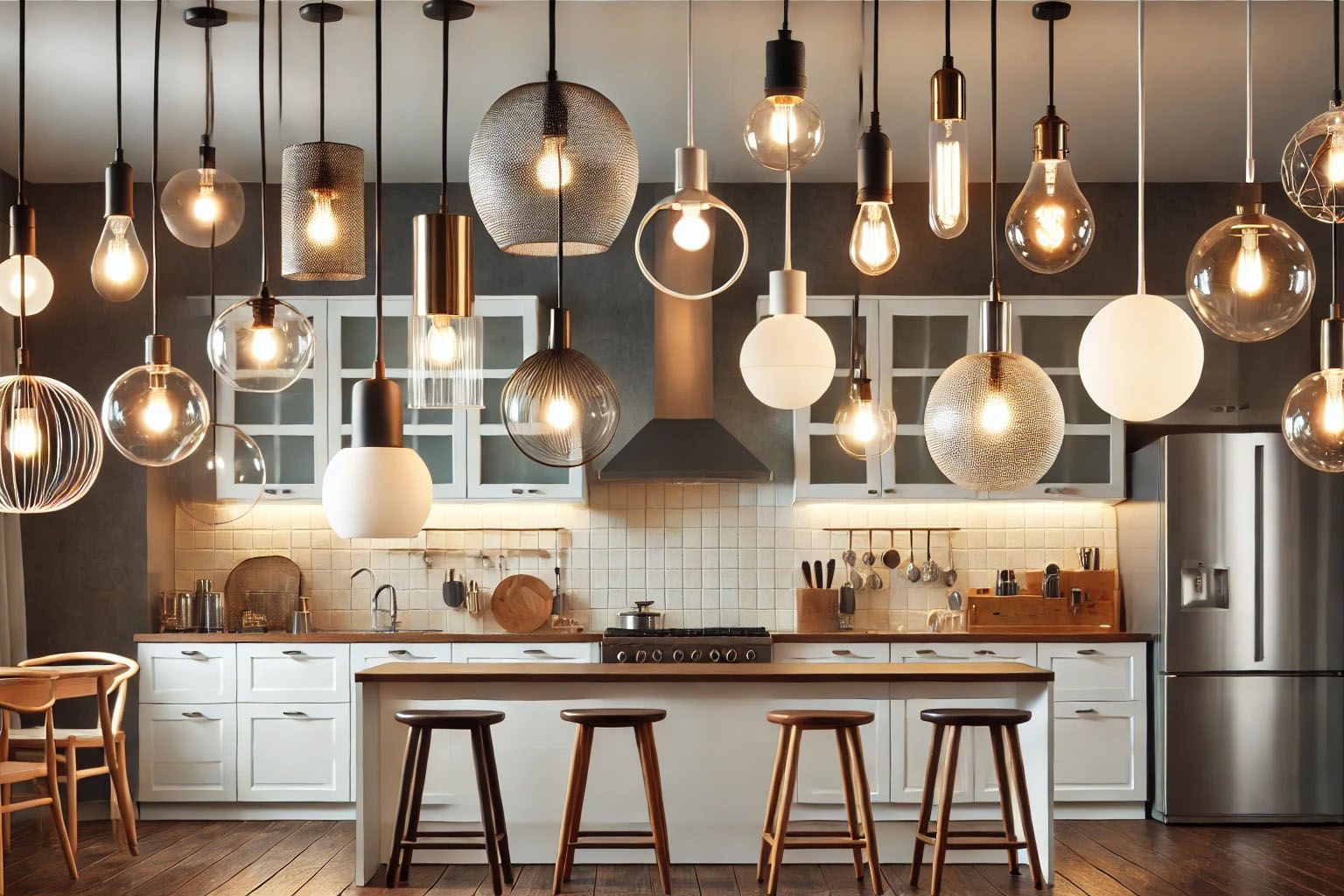
Choosing the right pendant lights for your kitchen can transform the space, adding both functionality and style. But with so many options, selecting the perfect pendant lights can feel overwhelming. This guide will help you choose the best pendant lighting for your kitchen, taking into account design, placement, and functionality. Here’s what to consider:
1. Determine the Purpose of Your Pendant Lights
The first step is to decide how you want your pendant lights to function. Are you looking for task lighting over kitchen islands or more general ambient lighting to set the mood? If you need focused lighting for food prep areas, choose pendant lights with a directed, downward glow. For softer, ambient lighting, go for fixtures with wider shades or glass materials that diffuse light throughout the room.
2. Choose a Style that Complements Your Kitchen Decor
Pendant lights come in various styles—industrial, modern, farmhouse, and minimalist. Selecting a style that matches your kitchen’s overall design can create a cohesive look. Here are a few popular styles:
- Modern pendant lights for kitchens: Sleek designs with clean lines and neutral colors suit contemporary or minimalist kitchens.
- Industrial pendant lighting for kitchen islands: These lights often have metal finishes and exposed bulbs, adding a touch of rustic appeal.
- Farmhouse-style pendant lights: Known for wood accents and soft curves, these lights add warmth to traditional or rustic kitchens.
If you’re designing a modern kitchen or looking for something timeless, black pendant lights for kitchens are a versatile choice that pairs well with most color schemes.
3. Consider Pendant Light Size and Scale
The size and scale of your pendant lights should fit the dimensions of your kitchen. For instance, small pendant lights over kitchen counters work well in smaller kitchens, while larger fixtures or multiple pendants might suit bigger spaces or kitchen islands. A good rule of thumb is to hang pendant lights 28-34 inches above a countertop to avoid glare and maintain a balanced look.
For long kitchen islands, consider placing two or three pendant lights evenly spaced to provide uniform lighting. Measure your space to ensure that the fixtures are spaced about 24-30 inches apart, allowing for both style and functionality.
4. Focus on Lighting Quality and Shade Material
The material and color of the shade impact the quality of light emitted. Glass pendant lights provide bright, direct light, making them ideal for food prep areas. Opaque shades or metal fixtures, however, can create more focused, task-oriented lighting that is perfect for kitchen islands.
Some materials, like brass or copper pendant lights, add a warm glow that enhances a kitchen's ambiance, especially in farmhouse or vintage-inspired designs. Consider choosing dimmable LED pendant lights if you want to control the intensity of your lighting, as this offers flexibility for both functional and aesthetic lighting needs.
5. Ensure Easy Maintenance and Durability
Kitchens are high-traffic areas, and pendant lights can accumulate grease and dust over time. Choose materials and designs that are easy to clean, such as glass or metal, which can be wiped down quickly. Avoid intricate designs that may trap grease, especially if the lights are close to cooking areas.
Final Recommendations
To recap, here are some final points to keep in mind:
- Determine your lighting needs: Task, ambient, or decorative.
- Choose a complementary style: Match with your kitchen’s aesthetic.
- Consider size and spacing: Ensure proper proportions and placement.
- Select the right shade material: For ideal lighting quality.
- Think about maintenance: Choose easy-to-clean materials.
With these tips in mind, you’ll be better equipped to select pendant lights that not only brighten your kitchen but also enhance its overall look.


